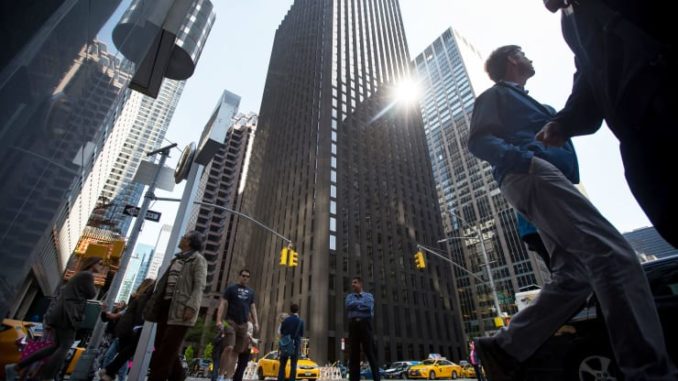
International investors became net sellers of commercial real estate this year for the first time since 2012. There was no one country accounting for the change, instead a small pullback in purchases that changed the investment equation.
Investors made direct acquisitions totaling $21.3 billion in the first half of 2019 but sold a little bit more at $21.4 billion, according to a new report from Real Capital Analytics.
“Prices are at record high levels in the U.S. Our cap rates are at record low levels. On the face of it, it would be hard for investors to put money to work in the U.S. The yield opportunity is not what it was a few years ago,” said Jim Costello, senior vice president at Real Capital Analytics. Blackstone is buying U.S. warehouse properties from Singapore-based GLP for $18.7 billion
In the second quarter alone, acquisitions dropped 37% from a year ago. That is due in part to some very large deals that closed last year, so the comparison to this year was skewed by that. When international investors purchase assets in the U.S., they typically have to put a lot of money to work at once in order to be operationally efficient. The same is true of huge sales.
“We will see huge net selling by cross-border investors in the second half of the year when the announced purchase of GLP by Blackstone closes,” added Costello.
While investors are still active, it is simply becoming harder to hedge against all the risks in the market, especially currency exchange rates and interest rate volatility. They purchased less so far this year, but they also sold less.
“If I have a good cash-flowing asset right now, and it’s a devil I know, as opposed to the uncertainty in the world, and when you have so much uncertainty increasing, and you’re not sure what’s going to happen next in the economy, stick with the devil you know, as opposed to sell the property and then how to I redeploy that cash? That’s the real challenge investors face right now. There is not some better option, when they’ve got a high-quality property that’s cash flowing,” said Costello.
Investors are increasing spending on the office and apartment sectors after making a big push into retail last year. They’re putting more capital into the New York City area; Boston; Seattle; and Las Vegas, but putting less into Los Angeles; Phoenix; San Jose, California; and Washington, D.C., according to the Real Capital report.
Canada, Germany and Singapore are the top buyers of U.S. commercial real estate by dollar volume. While Canada and Germany increased their investments annually, Singapore’s dropped by 55%.
China is a much smaller investor, but its dollar volume fell a steeper 74%. that is due to stricter government restraints on capital in the past year. Elsewhere, investors in the Middle East have stepped up significantly in the U.S. apartment market, which could be a flight to safety given volatility in oil prices.
The recent drop in interest rates has not come into play yet because commercial real estate deals can take 20 to 30 weeks to close, and interest rates didn’t really start falling dramatically until the last few months.
“So on a trailing basis, we’ve had a pipeline that’s been a little bit shut down,” Costello said.
BY CNBC NEWS
